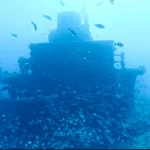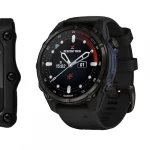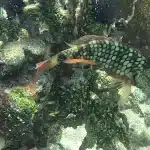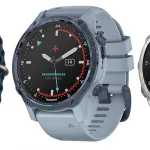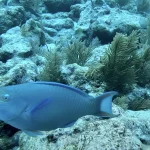Table of Contents
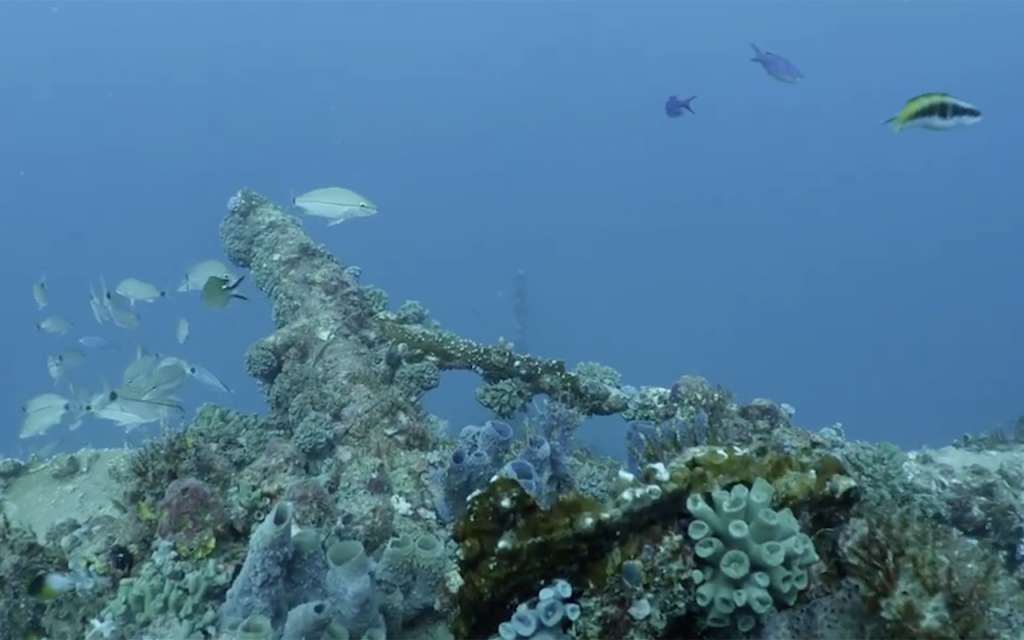
The RSB-1 seems to be a popular and rewarding dive site, offering a mix of wreck exploration and marine life encounters for advanced divers comfortable with its depth and potential currents.
Article at a Glance
- Historical Significance: The RSB-1, originally launched in 1965 and modified for military use, served in various capacities, including a dramatic submarine rescue operation, before being sunk as an artificial reef in 1994.
- Diving Depth: The wreck is located at a maximum depth of 120 feet (36 meters), with the main deck at 90 feet and the wheelhouse at 78 feet, making it suitable for advanced divers.
- Unique Structure: The RSB-1 sits upright on the seafloor, with its bow pointing north, and features large openings in the hull that facilitate penetration diving.
- Marine Ecosystem: As an artificial reef, the wreck supports a diverse array of marine life, including schools of fish such as barracuda, jacks, snapper, and various invertebrates like orange cup corals.
- Diving Requirements: Divers are required to have Advanced Open Water and Enriched Air certifications due to the wreck’s depth and the potential challenges posed by currents.
- Safety Protocols: Safety measures include pre-dive briefings, buddy systems, proper equipment, and wreck penetration training to ensure a safe diving experience.
- Accessibility: The RSB-1 is accessible through local dive shops in the Pompano Beach, Deerfield Beach, and Fort Lauderdale areas, making it a popular destination for experienced divers seeking unique underwater exploration.
Shipwreck Location Coordinates and Depth
Depth
The wreck sits at the following depths:
Location Coordinates
The RSB-1 wreck is located at:
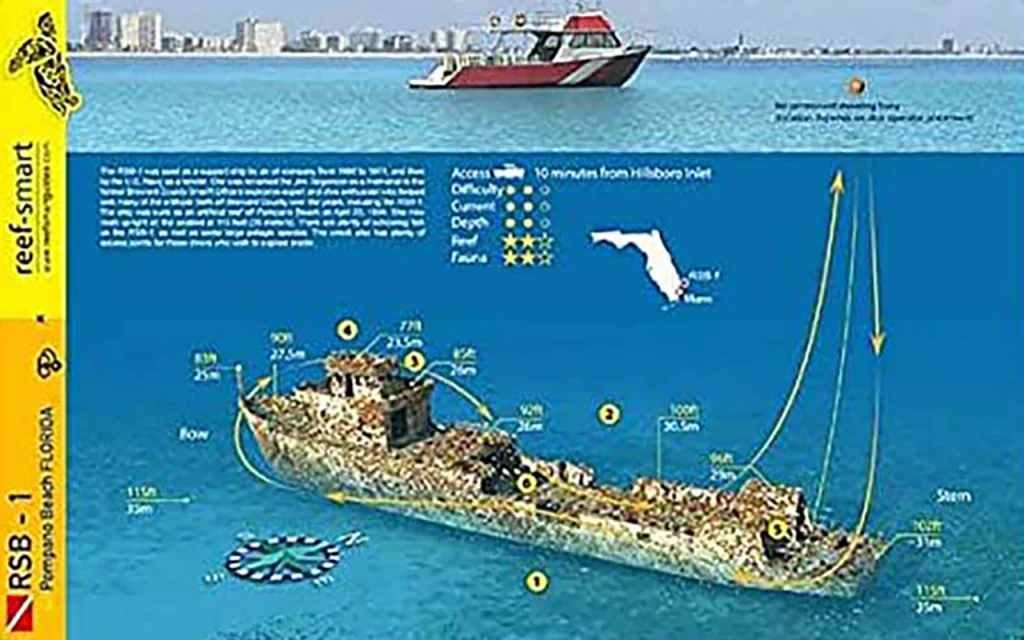
What Do Scuba Divers Say About This Ship
Dive Experience
- Divers describe it as an impressive wreck with good visibility and interesting features for exploration.
- The wreck offers opportunities for penetration diving through large openings in the hull, making it easy to enter for properly trained divers.
- It’s known for having abundant marine life, with schools of fish often seen around the mast and structure.
Physical Characteristics
- The RSB-1 sits upright on the seafloor with its bow pointing north.
- It has a tall structure on the wheelhouse, creating an interesting profile and acting as a fish haven.
- The wreck has about 25 feet (8 meters) of vertical relief off the seafloor.
Marine Life
Divers have reported seeing:
- Schools of reef fish
- Barracuda
- Jacks
- Occasional spadefish and pompano
- Snapper, parrotfish, grunts, damsels, and angelfish
Diving Conditions
- The wreck is subject to strong currents at times due to the Gulf Stream.
- Visibility can vary, but divers have reported 30-40 feet of visibility on good days.
What Kind of Marine Life Can Be Found on The Ship
Fish Species
- Schools of reef fish
- Barracuda
- Jacks
- Snapper
- Grunts (including blue-striped grunts)
- Parrotfish
- Damselfish
- Angelfish
- Occasional spadefish and pompano
Invertebrates
- Orange cup corals (covering parts of the structure)
- Sponges
- Anemones (including plumose anemones)
- Soft corals (like dead man’s fingers)
Other Marine Life
- Various species of algae
- Microorganisms and bacteria (forming the initial biofilm for other species to colonize)
Key Information
| Category | Details |
|---|---|
| Name | RSB-1 (Range Support Boat #1) |
| Location | Off the coast of Deerfield Beach, Florida |
| Coordinates | Latitude: 26° 13.642′ N Longitude: 80° 03.896′ W |
| Depth | Maximum depth: 120 feet (36 meters) Main deck: 90 feet Wheelhouse: 78 feet |
| Length | 160 feet (48.5 meters) |
| Sinking Date | April 23, 1994 |
| Historical Background | – Originally launched in 1965 as “Leo Wood, Jr.” – Modified for military use in 1971 – Served in U.S. Navy for underwater mine testing |
| Current Status | Serves as an artificial reef and popular dive site |
| Marine Life | Schools of reef fish, barracuda, jacks, snapper, parrotfish, grunts, and various invertebrates |
| Diving Requirements | Advanced Open Water and Enriched Air certifications required |
| Unique Features | – Upright position with bow pointing north – Large openings for penetration diving – Tall wheelhouse structure |
| Safety Measures | – Pre-dive briefings – Buddy system – Proper equipment and wreck penetration training |
| Dive Shops | Local dive shops in Pompano Beach, Deerfield Beach, and Fort Lauderdale (specific shops may vary) |
What Makes RSB-1 Shipwreck a Unique Diving Experience
Historical Significance
The RSB-1 has a rich and varied history, having served multiple roles before becoming an artificial reef:
- Originally built in 1965 as an oil industry support vessel
- Later modified for military use and participated in a dramatic submarine rescue
- Served the U.S. Navy in underwater mine testing and development
This diverse background adds depth to the diving experience, allowing divers to explore a vessel with an interesting past.
Physical Characteristics
- 160-foot long tender vessel, providing an expansive area to explore
- Sits upright on the seafloor with the bow pointing north, making navigation straightforward
- Features a tall structure on the wheelhouse, creating an interesting profile and serving as a fish haven
- Large openings in the hull allow for easy penetration diving for properly trained divers3
Marine Life
The wreck has become a thriving artificial reef, supporting diverse marine life:
- Wheelhouse adorned with carpets of orange cup corals and other marine growth
- Schools of fish, including blue-striped grunts and grey snappers, often seen around the mast and structure
- Variety of other marine species making their home on the wreck
Diving Conditions
- Maximum depth of 120 feet (36 meters) to the sand
- Wheelhouse at 78 feet, main deck at 90 feet
- 25 feet (8 meters) of vertical relief off the seafloor
- Suitable for advanced divers, requiring Advanced Open Water and Enriched Air certification due to its depth
How Does The RSB-1 Compare to Other Shipwrecks in Florida
Historical Context
Unlike many of Florida’s famous shipwrecks, the RSB-1 is a relatively modern vessel:
- Sunk intentionally in 1994 as an artificial reef
- Not a casualty of hurricanes or warfare like many historical wrecks
- Lacks the treasure-hunting allure of Spanish galleons from the colonial era
Purpose and Design
- Originally an oil industry support vessel, later modified for military use
- Purposefully sunk as part of Broward County’s Artificial Reef Program
- Designed to create habitat for marine life and attract divers
Accessibility and Diving Experience
- Located in relatively deep water (120 feet maximum depth)
- Requires advanced diving certifications, unlike some shallower wrecks
- Offers penetration diving opportunities through large hull openings
- Sits upright, providing a different experience from ships that have broken apart
Marine Life
- As a newer artificial reef, it supports a different ecosystem compared to centuries-old wrecks
- Attracts a variety of fish species and has developed significant coral growth
Historical Significance
While the RSB-1 lacks the historical depth of colonial-era shipwrecks, it has its own unique story:
- Participated in a submarine rescue operation
- Served in U.S. Navy underwater mine testing
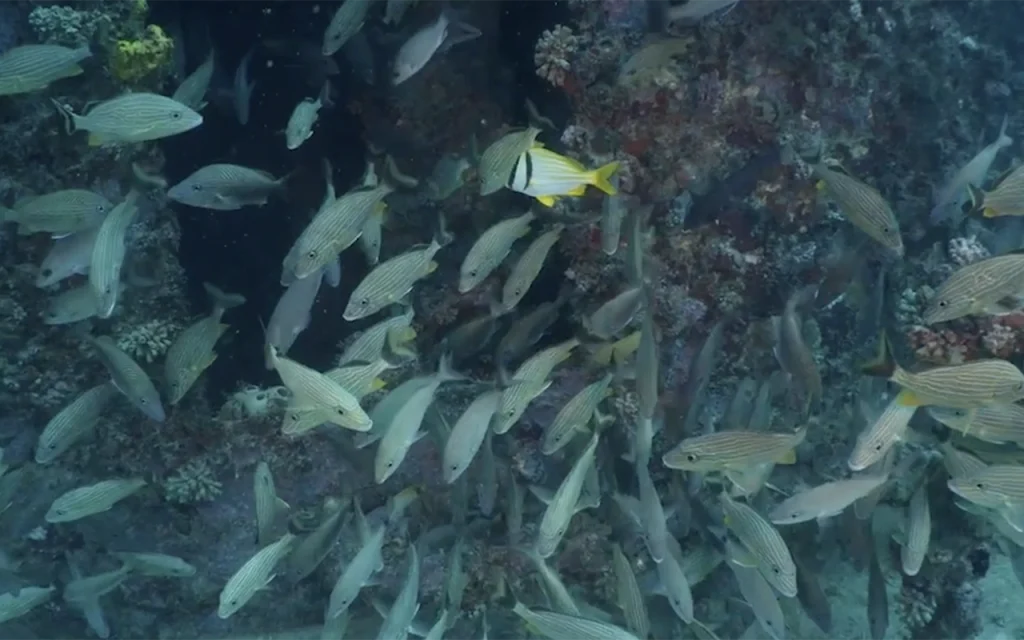
What is The Full History of This Ship
Early Years
- Launched in 1965 by Bishop Marine Service at Port Aransas, Texas
- Originally named “Leo Wood, Jr.”
- Initially served as an offshore crew and materials transport vessel for the oil industry
Military Service
- In 1971, purchased by Tracor, Incorporated and modified for military use
- Renamed “A.B. Wood II”
- In 1973, participated in a dramatic rescue operation, helping save two crew members from the Johnson Sea Link submersible that had become entangled in the wreckage of the destroyer U.S.S. Fred T. Berry
- As a result of this rescue, added to the Supervisor of Salvage list of assets for rescuing downed submersibles
U.S. Navy Ownership
- Purchased by the U.S. Navy in 1976
- Renamed “Range Support Boat #1” (RSB-1)
- Operated with a civilian crew by the Naval Surface Warfare Center, Fort Lauderdale Detachment
- Supported underwater test and evaluation range operations
- Operated offshore of South Florida and near Andros Island, Bahamas
- Involved in underwater mine testing and development
Final Years and Sinking
- Put out of service in 1992
- Donated to the Broward County Artificial Reef Program in 1993
- On April 23, 1994, intentionally sunk using explosives to create an artificial reef
- Sank in just three minutes
- Renamed “Jim Torgerson” after sinking, honoring a U.S. Navy veteran and Broward County Sheriff’s explosive expert
Current Status
- Rests upright and intact in 120 feet (36 meters) of water off the coast of Deerfield Beach, Florida
- Serves as an artificial reef and popular dive site
- Part of the broader Broward County Artificial Reef Program
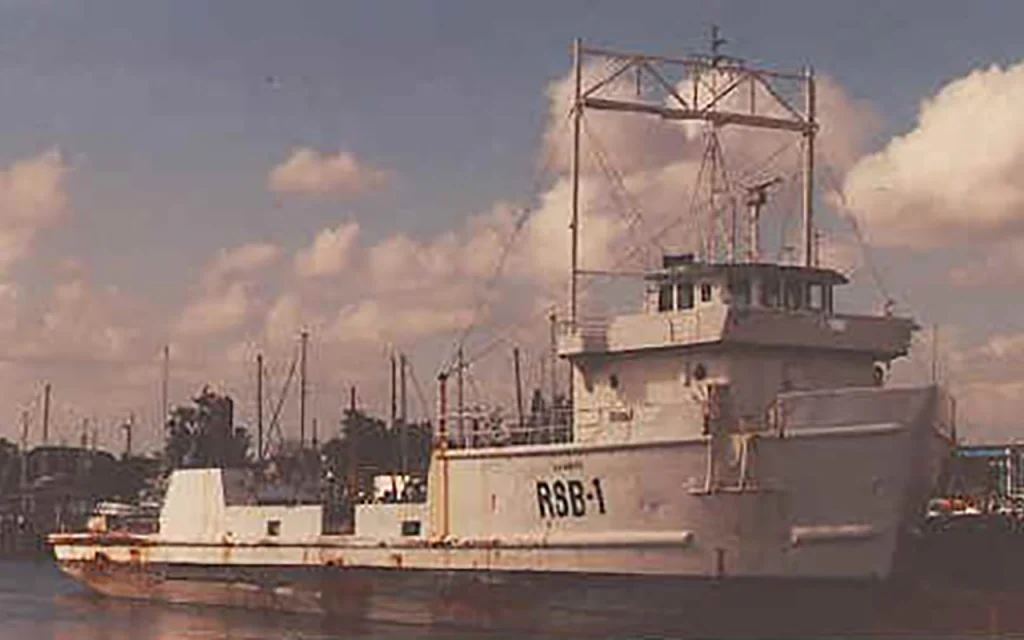
What Historical Features Can Still Be Identified on The RSB-1 Wreck
Structural Elements
- Wheelhouse: This is often the starting point for dives and is described as the highest point of the wreck.
- Cargo holds: Divers report being able to explore these areas.
- Bow: While sometimes difficult to reach due to currents, the bow is still identifiable.
- Tall structure on the wheelhouse: This feature creates an interesting profile and serves as a fish haven4.
Navigational Aspects
- Upright position: The ship sits upright on the seafloor, making navigation straightforward4.
- Bow orientation: The bow points north, which helps divers orient themselves4.
Accessibility Features
- Large openings in the hull: These allow for easy penetration diving for properly trained divers4.
Historical Modifications
While not explicitly stated, the wreck likely retains some evidence of its various roles:
- Original oil industry support features
- Modifications made for military use in 1971
- Equipment related to its Navy service for underwater mine testing and development
Marine Growth
- Orange cup corals: The wheelhouse is described as being adorned with carpets of these corals, indicating the wreck’s long-term presence underwater.
What Safety Measures Are in Place for Divers Visiting the RSB-1
- Certification Requirements: The wreck’s depth (120 feet maximum) requires divers to have Advanced Open Water and Enriched Air certifications.
- Dive Planning: Proper dive planning is essential, including calculating air consumption at depth and ensuring sufficient air for the dive, safety stops, and surface return with a reserve.
- Equipment:
- Wreck Penetration Training: Divers intending to enter the wreck should have specific wreck penetration certification.
- Buddy System: While not explicitly mentioned for RSB-1, diving with a buddy is a standard safety practice.
- Orientation: The wreck’s upright position with the bow pointing north aids in navigation and orientation.
- Easy Access: Large openings in the hull allow for easier penetration and exit if needed4.
- Dive Briefings: Standard practice includes pre-dive briefings to inform divers about current conditions and potential hazards.
- Surface Support: Dive boats typically have crews monitoring divers and ready to assist if needed.
- Environmental Considerations: As an intentionally sunk artificial reef, the RSB-1 was likely cleaned of hazardous materials before sinking, reducing risks associated with contaminants.
Dive Shops That Provide Diving Trips to This Shipwreck
- Several dive operators in the Pompano Beach area offer trips to local wrecks, including the RSB-1:
- South Florida Diving Headquarters is mentioned as a dive operator in the area. They offer drift diving trips to local wrecks and reefs.
- Aqua Life Divers provides various dive trip options, including morning, afternoon, and night dives, as well as private charters. While they don’t specifically mention RSB-1, they do offer wreck diving trips.
- Squalo Divers offers Pompano Beach diving trips that include wreck and reef dives. They specifically mention RSB-1 as one of the wrecks visited on their advanced diving trips.
- The RSB-1 is typically considered an advanced dive due to its depth (120 feet maximum). Dive operators usually require Advanced Open Water and Enriched Air certifications for this site.
North Florida Wrecks
- USS Oriskany
- USS Massachusetts
- SS Tarpon
- SS Gulf America
- Empire Mica
- USS Chippewa
- Avocet
- Black Bart
- The Vamar
- San Pablo
- USS Narcissus
- The Loftus Wreck
- The Dorothy Louise
- The Mizpah
- MV Janet
- The Eidsvag
- YDT-14 and YDT-15
- USS Strength
- Miss Louise
- The Lulu
- PC-1174
- Three Coal Barges
- USS Accokeek (ATA-181)
- El Dorado
- The Grey Ghost
- The Pete Tide II
- Red Sea Tug

